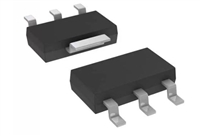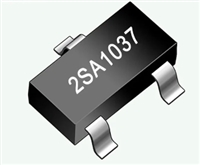| 是否Rohs认证: | 不符合 | 生命周期: | Active |
| Reach Compliance Code: | unknown | 风险等级: | 5.83 |
| Is Samacsys: | N | JESD-30 代码: | R-PDSO-G48 |
| JESD-609代码: | e0 | 负载电容(CL): | 30 pF |
| 逻辑集成电路类型: | D FLIP-FLOP | 最大频率@ Nom-Sup: | 250000000 Hz |
| 最大I(ol): | 0.024 A | 功能数量: | 16 |
| 端子数量: | 48 | 最高工作温度: | 85 °C |
| 最低工作温度: | -40 °C | 输出特性: | 3-STATE |
| 封装主体材料: | PLASTIC/EPOXY | 封装代码: | TSSOP |
| 封装等效代码: | TSSOP48,.3,20 | 封装形状: | RECTANGULAR |
| 封装形式: | SMALL OUTLINE, THIN PROFILE, SHRINK PITCH | 包装方法: | TAPE AND REEL |
| 电源: | 3.3 V | Prop。Delay @ Nom-Sup: | 3 ns |
| 认证状态: | Not Qualified | 子类别: | FF/Latches |
| 标称供电电压 (Vsup): | 3.3 V | 表面贴装: | YES |
| 技术: | CMOS | 温度等级: | INDUSTRIAL |
| 端子面层: | Tin/Lead (Sn/Pb) | 端子形式: | GULL WING |
| 端子节距: | 0.5 mm | 端子位置: | DUAL |
| 触发器类型: | POSITIVE EDGE | Base Number Matches: | 1 |
| 型号 | 品牌 | 获取价格 | 描述 | 数据表 |
| NL74VCXH16240DT | ETC |
获取价格 |
Quad 4-Bit Buffer/Driver |

|
| NL74VCXH16240DTR | ETC |
获取价格 |
Quad 4-Bit Buffer/Driver |

|
| NL74VCXH16245DT | ETC |
获取价格 |
Dual 8-bit Bus Transceiver |

|
| NL74VCXH16245DTR | ETC |
获取价格 |
Dual 8-bit Bus Transceiver |

|
| NL74VCXH16373DT | ETC |
获取价格 |
8-Bit D-Type Latch |

|
| NL74VCXH16373DTR | ETC |
获取价格 |
8-Bit D-Type Latch |

|
| NL74VCXH16374DT | ETC |
获取价格 |
16-Bit D-Type Flip-Flop |

|
| NL74VCXH16374DTR | ETC |
获取价格 |
16-Bit D-Type Flip-Flop |

|
| NL7SB3257CMX1TCG | ONSEMI |
获取价格 |
EXCHANGER |

|
| NL7SZ18 | ONSEMI |
获取价格 |
1−of−2 Non−Inverting Demultiplexer with 3−State Deselected Output |

|
 BSS138LT3G:一款高效能N沟道MOSFET的全面解析
BSS138LT3G:一款高效能N沟道MOSFET的全面解析

 解读EGP10B二极管资料手册:产品特性、参数分析
解读EGP10B二极管资料手册:产品特性、参数分析

 RT9164AGG手册资料详解:引脚信息、设计指南
RT9164AGG手册资料详解:引脚信息、设计指南

 2SA1037KPT资料详解:产品特性、电气参数、设计指南
2SA1037KPT资料详解:产品特性、电气参数、设计指南
